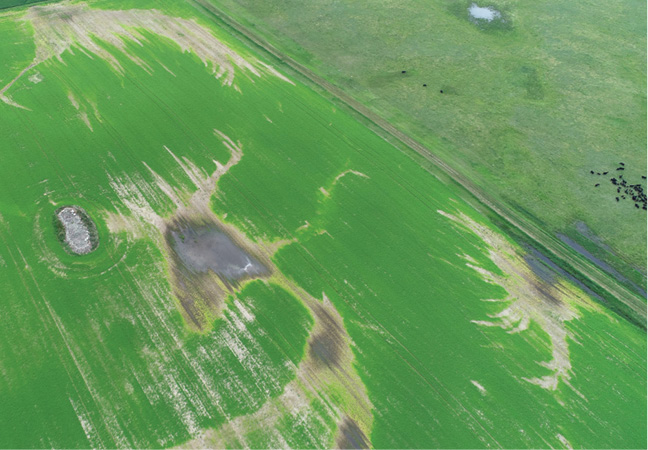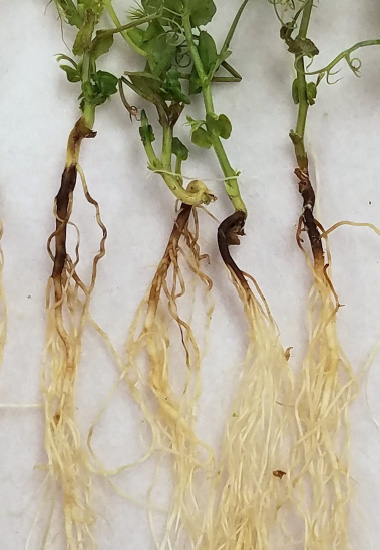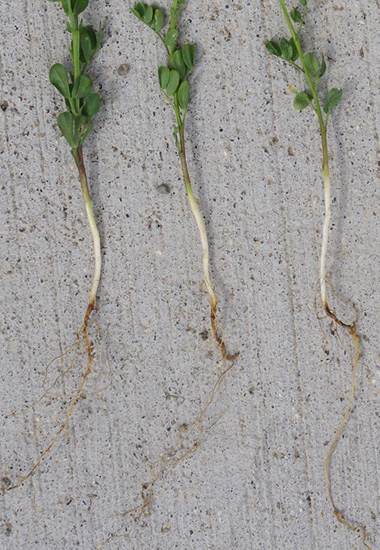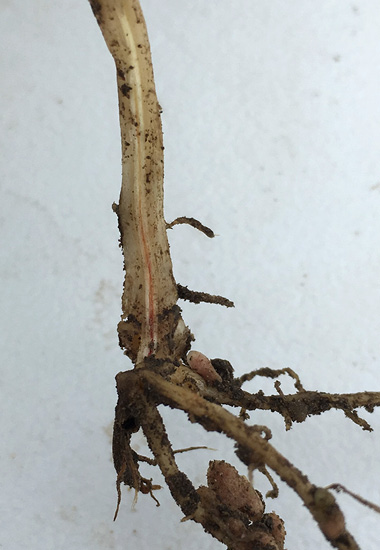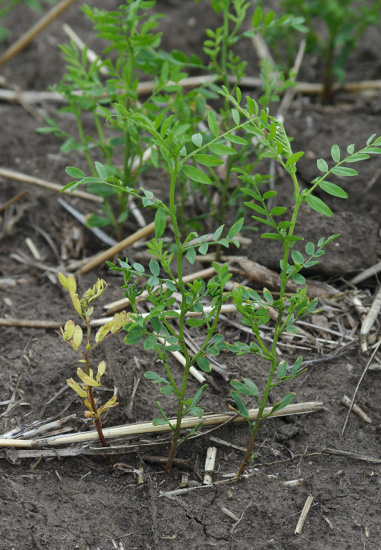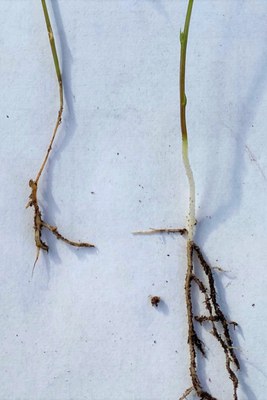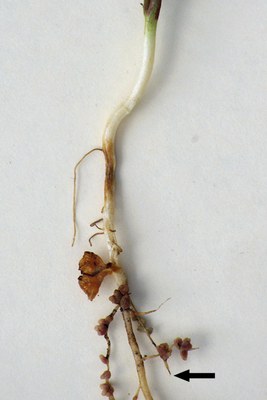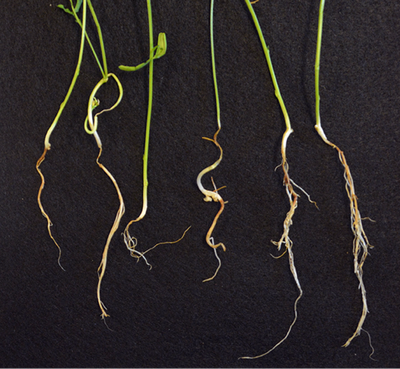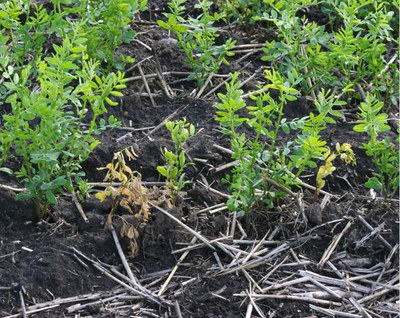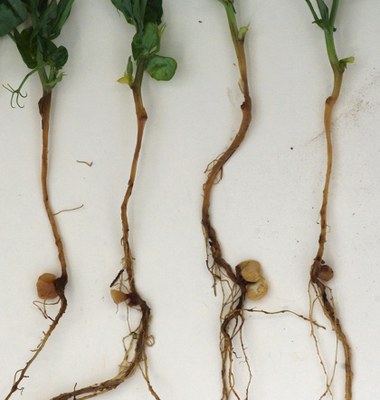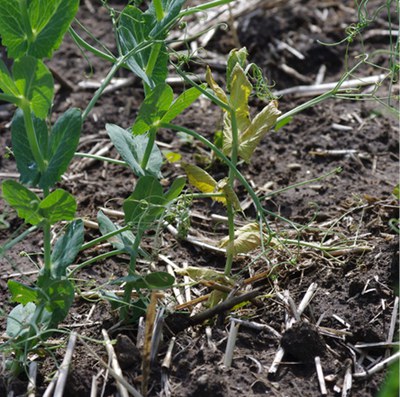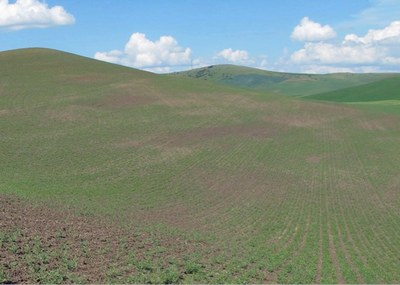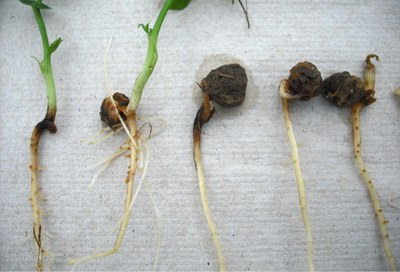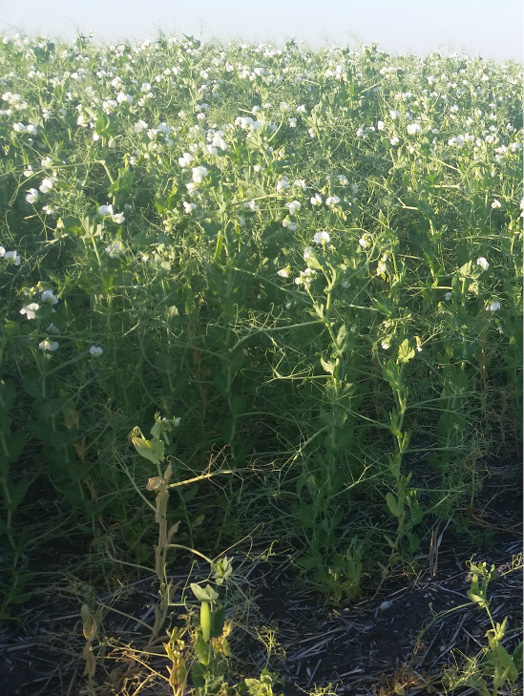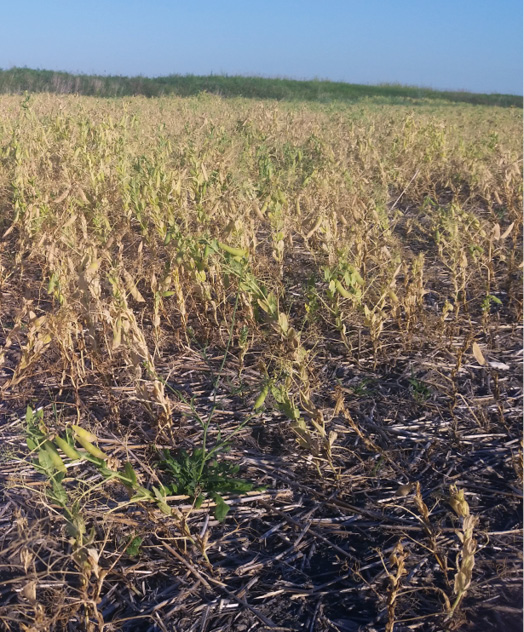Managing root rot pathogens focuses on prevention and identification because no economically viable options are available for in-season treatment of plants that have been infected by root pathogens. Early identification of the causal organism (pathogen) will help plan management decisions for future seasons.
For accurate diagnosis of root rot diseases, submit fresh, symptomatic plants as soon as symptoms develop. If the plants are not fresh, secondary, opportunistic organisms usually colonize rotting tissues while plants remain in the field and while samples are stored. These organisms can mask and outcompete the pathogen, making diagnosis more difficult.
For optimum sample collection, contact the North Dakota State University Plant Diagnostic Lab for tips. In general, best results are obtained if you carefully excavate roots with a shovel and send the whole plant, including the entire root system.
Remove excess soil, wrap the root in moist paper towels, and wrap the entire plant in dry paper towels. Seal the sample in a bag and store the sample in a cool place or refrigerator until you can ship or deliver the sample to a diagnostician. Ship overnight to the NDSU Plant Diagnostic Lab, ideally early in the week to prevent delay in the mail.
Scout fields often to identify optimum samples. Diagnosis is much more difficult to obtain from dead or severely infected plants, and often molecular techniques are required. While more expensive, these are an option if you wish to explore them. More information can be found at the NDSU Plant Diagnostic Lab website, www.ag.ndsu.edu/pdl and contact information is below.
NDSU Plant Diagnostic Lab
Mailing Address (USPS):
NDSU Dept 7660
PO Box 6050
Fargo ND 58108-6050
Shipping Address (Fedex/UPS):
1402 Albrecht Blvd.
Walster Hall, 306
Fargo, ND 58102
Telephone: 701-231-7854
For more information:
PP1913 — “Lentil Disease Diagnostic Series”
PP1790 — “Pea Disease Diagnostic Series”
PP622 — “North Dakota Field Crops Disease Management Guide”
A1922 — “Pulse Crop Production Field Guide for North Dakota”
Carrington Research Extension Center Pathology
This work is/was supported by the USDA National Institute of Food and Agriculture, Crop Protection and Pest Management Program through the North Central IPM Center (2018-70006-28883).
